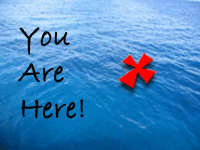 |
Station Information
The majority of CalCOFI field work consists of the occupation of the oceanographic stations -specific geographic locations - which pattern the survey area. Seventy-five stations are scheduled during a typical 18 day cruise. Coverage is expanded north of Pt Conception during winter and spring spawning seasons to 104 stations. Within the allotted ship time, each cruise occupies every station possible but the station plan is dynamic. Stations are reordered or dropped when weather, ship, medical, or naval issues interrupt station operations.
In 1949, the cruise transects were determined by lines drawn on nautical charts perpendicular (true bearing 330 degrees) to the California coastline 40 nautical miles apart. Stations in the coastal regime were spaced every 20nm or closer, around features such as basin or islands. Offshore stations were spaced 40nm apart to create a 40x40nm grid. The main goal was the measurement of onshore-offshore gradients strongly influenced by the California Current & bathymetry. Most oceanographic features off the California coast are influenced by the southward flow of the California Current and a seasonal, northward, near-shore counter current. Having transects oriented at right angles to the coastline allows better resolution of transition zones than if they were along the lines of latitude and longitude. In referring to a station number under the present plan, the line number is given, then a decimal point, then the station number. This scheme facilitates quick identification of the station location within the pattern: station 90.60 is station 60.0 on line 90.0, for example.